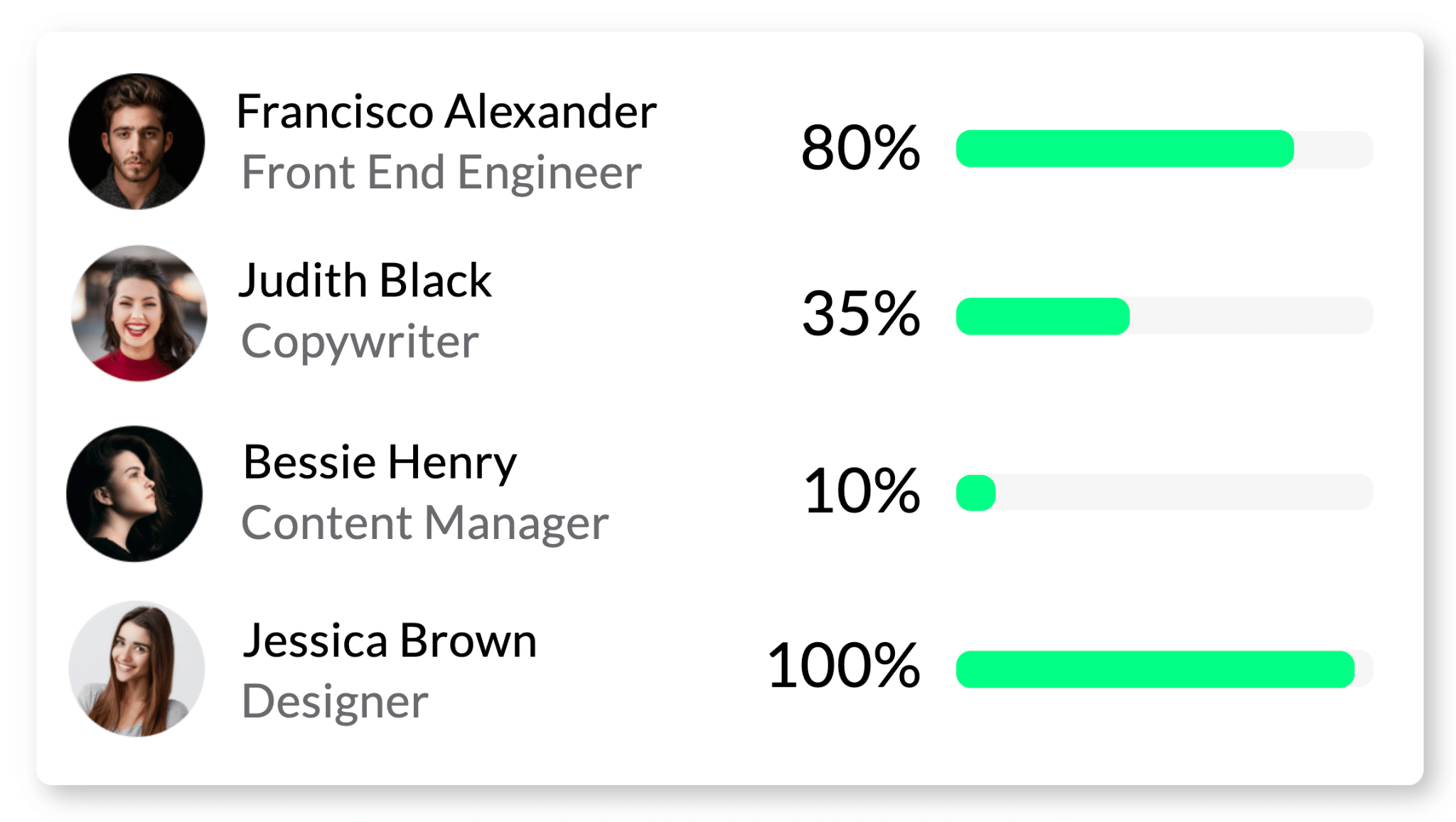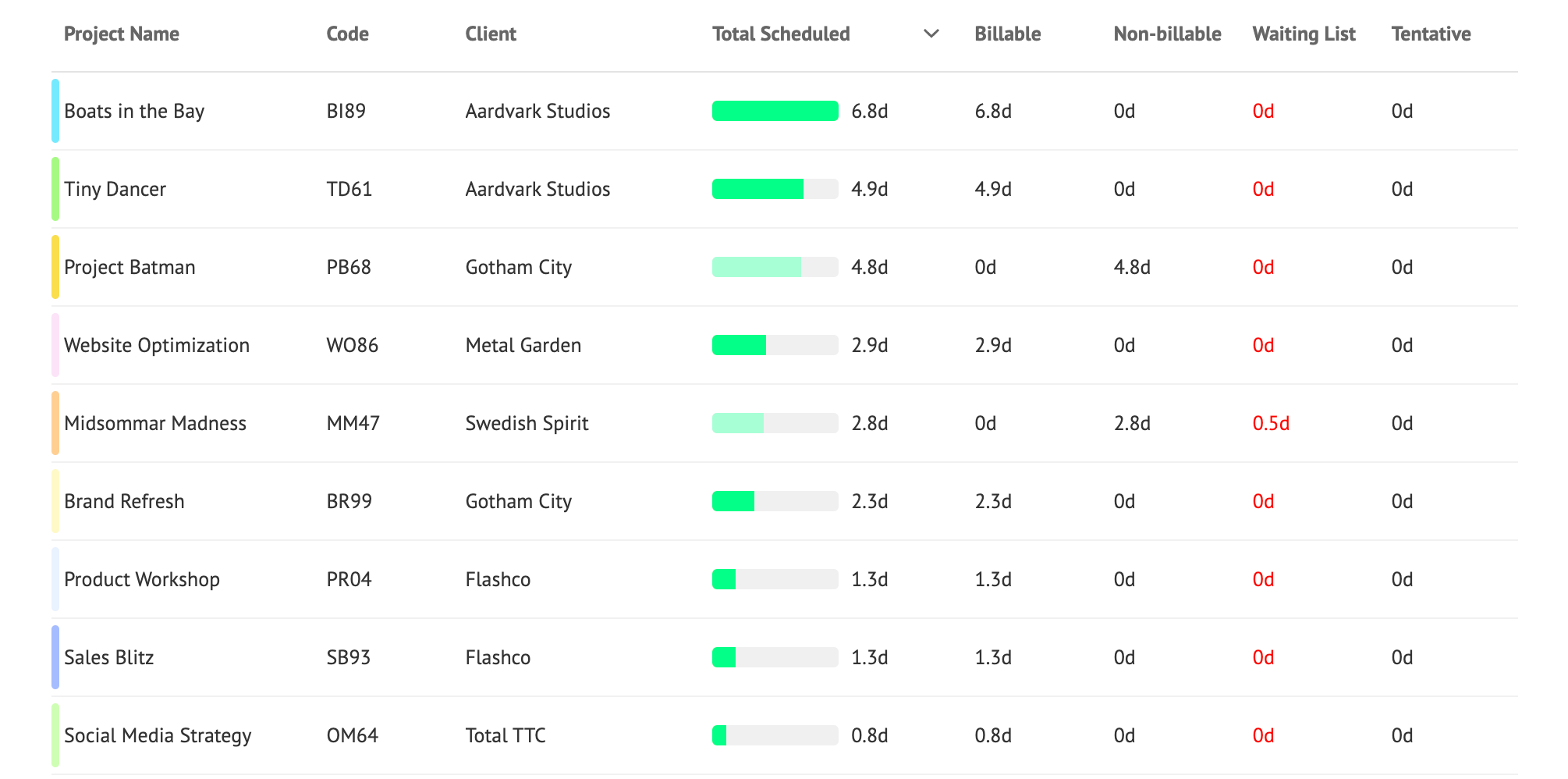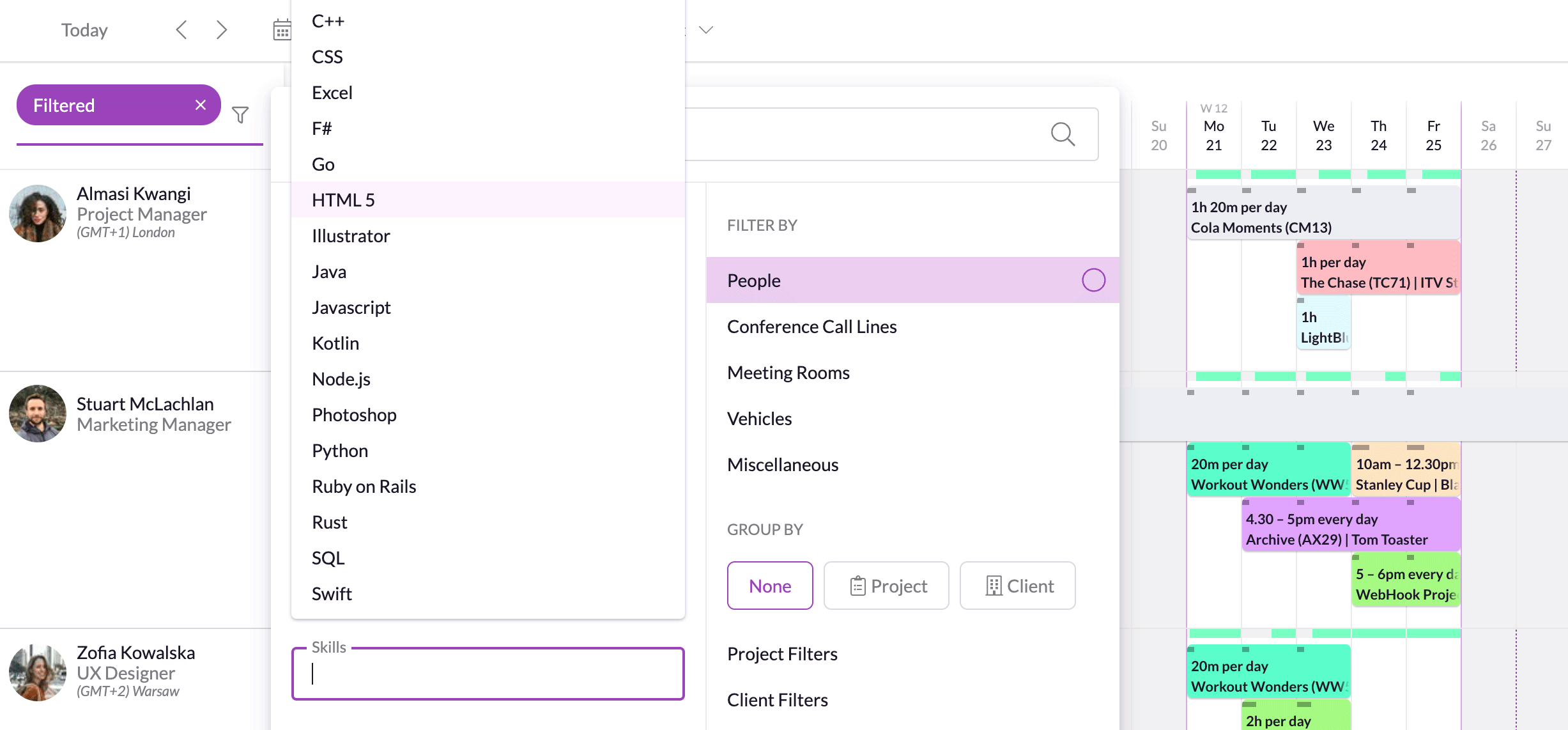Just 34% of project managers report completing projects “mostly or always” on time. So, most project managers are getting tripped up by project delays, which put a strain on everyone involved and also strain the bottom line.
Recurring project delays are red flags signaling clashes between resource demand and availability. When you can’t accurately match up project needs with your team members’ bandwidth, you end up being bogged down by delays as you scramble to find coverage or reallocate work. You’ll also deal with burnt-out and disengaged employees–which contributes to further delays–as well as frustrated clients and project stakeholders.
If this sounds like your life as a PM, we promise that there’s good news! You can skip all of this mess just by improving your capacity planning.
By addressing problem areas in your capacity planning, you’ll be able to better resolve issues between capacity and demand that lead to project delays. And with the right resources and the right skills scheduled for the right amount of time (phew), you’ll stay ahead of the game and see greater project success.
In this article 📖
Use 70-80% utilization as the foundation of your plan
Conducting capacity planning with too-high or too-low utilization targets sets your projects up for delays, with team members either drowning in work or waiting around for assignments.
A 70-80% utilization rate is the ideal zone to keep things on track. This rate of work keeps people engaged without burning them out, and it also creates a more flexible buffer zone to account for any disruptions.
While 100% is often seen as being “the best,” using it as your team’s maximum capacity is one of the worst things you can do when trying to complete projects on time. You’ll create project timelines with the idea that employees will spend every minute of their day on billable work–which just isn’t true. So, you’ll inevitably see delays because your project deliverables are based on productivity that’s impossible to achieve (unless you’re a robot).
A 70-80% target is more realistic, factoring in time for non-billable work tasks as well as general downtime. Without this buffer window, your team members will frantically juggle too much, and things will fall through the cracks.
Delayed projects can also happen if people call out sick unexpectedly from the stress or, in the worst-case scenario, they completely burn out and quit.

It’s a good idea to keep a close eye on both individual and team utilization rates
On the other hand, targeting below 70% leads to situations where you have team members frequently “on the bench” instead of contributing to billable tasks they had the ability to take on. This can lead to lost revenue from reduced project scopes or turned-down projects. Additionally, employees may quickly grow stagnant and look for other work if they aren’t being challenged.
Base your capacity planning on data, not guesswork
The last thing you want in the middle of a project is to realize you miscalculated the number of people needed for the project and the timeframe to complete it. Accurate resource and project data gives you accurate capacity forecasts, which is key for minimizing issues with your project schedule.
Let’s look at an example. When project planning for next month, Jared takes an educated guess that his team should be able to finish all their projects in 100 hours.
However, Jared’s plans quickly fall to pieces when it becomes clear that one project requires at least 25 more hours, and two of his engineers are on vacation–something he never factored in when determining availability. What does this equal? Project chaos.
In an ideal world, all PMs have access to a single source of truth that houses their historical and real-time data, making it easy to accurately calculate employee capacity and compare it against upcoming project needs. But we know that’s not the reality for everyone.

It’s easier to plan ahead when you have a single source of truth that tracks scheduled time
If you struggle to glean concrete employee and project information across spreadsheets and task-based apps, pull what numbers you can and then talk to your project team members. Since they’re the ones “on the ground,” they can give you a more accurate idea of what certain deliverables require, from team member experience to hours. When in doubt, ask–your team and projects will thank you.
Calculate individual and team capacity
Once you have your numbers, calculating individual capacity is pretty straightforward. Multiply your employee’s available billable hours with your utilization target.
For example, for a full-time employee, working 40 hours per week and taking no time off in August, with a utilization target of 80% (as we recommend), the calculation would be 160 x .80. Based on this, this individual has the capacity for 128 available hours of billable work that month.
Calculating team capacity is a bit more involved since not everyone works the same amount of hours every month. The simplest way to do this is to group people with the same availability together in your calculations and then deal with individual outliers separately:
- Six full-time employees with no time off next month: 6 x 160 x .80 = 768
- Two FTEs taking off five days each next month: 2 x 120 x .80 = 192
- One FTE taking off one day next month: 1 x 152 x .80 = 121.6
- One part-time employee with no time of next month: 1 x 80 x .80 = 64
Then add the totals, and you’ve got your maximum team capacity for the month. Here, it’d be 1,145.6 hours. Exceeding that limit means demand outstrips resources, causing you to put people on overtime or hire freelancers. Being too far under means you didn’t optimize resources to their full potential.
Keep an updated team matrix for optimal resource allocations
Just because someone has the capacity to take on a project doesn’t necessarily mean they should.
Besides being able to accurately allocate resources to meet project demand, part of effective capacity planning is determining which people have the right skills and will be able to best meet project goals. And an up-to-date employee directory will help you make those optimal decisions.
Once you determine who’s available for certain projects, consider their current primary and secondary skills as well as their career goals. If team members feel stuck doing the same tasks over and over with no chance to explore their interests, their morale, quality of work, and productivity will suffer. This will quickly derail projects and can also lead to turnover–which further impacts project staffing and delivery.
Project management tools often give you the option to search employee profiles based on their departments and skill sets, making it easier to find someone who has the right blend of availability, experience, and interest.

Software can help you keep track of the skillsets and experience on your team
If you don’t have this kind of platform, though, check in with team managers as well as your team members to identify their strengths and professional development goals. Not only will this help ensure that the right people staff your projects, but showing you want to help employees grow will also improve their job satisfaction.
Decrease project delays with capacity planning software
While solid capacity plans can prevent a lot of project delays, unfortunately, they can’t prevent all of them.
The key to keeping your projects on track when unexpected delays arise is to keep an eye on capacity as the project progresses. This way, you can proactively adjust workloads when needed, like if an employee calls out sick or a client sends back more revisions than expected.
Data-backed capacity planning allows you to make the most of your employees’ time–and Resource Guru helps you make the most of yours. Our lightning-fast capacity planning software gives you a clear overview of staff availability, and you can easily dig into past and present project data to accurately forecast resource needs.




